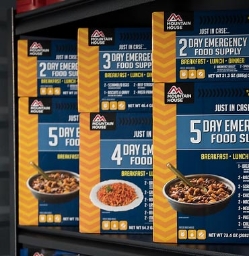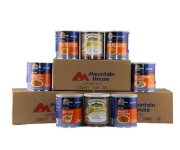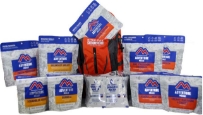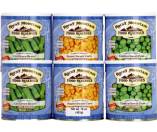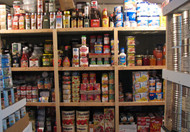What Are the Best Foods for Long-Term Storage?
Posted by Jeremy Knauff on Feb 22nd 2020
What Are the Best Foods for Long-Term Storage?
Food storage is the foundation of any preparedness plan. For a lot of people, it can be overwhelming. Where do you start? What do you need? Where are you going to put it all?
Fortunately, it’s a lot easier than it sounds. Like any large task, an effective food storage plan is best tackled one step at a time. Your first step, of course, is to decide what food to store. You want to choose food that is cost-effective, nutritious, has a long shelf-life, and that you enjoy eating.
Here are eight types of food that meet those criteria:
Rice
If you want a cheap food that will last almost forever, it’s hard to beat rice. You can pick up a 20 pound bag at any grocery store for around $10, and it has a shelf-life of over 20 years when properly stored. Opt for white rice instead of brown because brown only has a shelf-life of about 6 months.
Beans
Nearly as inexpensive as rice and offering just as long of a shelf-life, beans pack plenty of protein, which would otherwise be tough to find during a crisis. Unlike most other plant-based protein, beans contain provide a source of all nine essential amino acids.
Wheat
You can only store wheat long-term in its original form, which means you also need a grinder to turn it into flour. This isn’t a problem; it just adds one extra step. Proper storage will give you a shelf-life of 20 years or more. You’ll probably have to order it online, but I recommend only buying non-GMO wheat.
Quinoa
Although it looks like a grain, quinoa is actually a seed, and like beans, it provides a complete protein. It has a shorter shelf-life than some of the other foods we’ve covered at about 3 years, but that should be plenty if you practice proper food rotation.
Honey
Scientists have found honey in the ancient pyramids that was still just as tasty and completely safe for consumption as the day the tomb was sealed thousands of years ago. Honey is a rich source of calories and a versatile sweetener with an unlimited shelf-life.
Sugar
Like honey, sugar has an unlimited shelf-life, plus it’s cheap and easy to store.
Freeze-Dried Food
The biggest benefit of freeze-dried food is the convenience. Each case contains a variety of meals, and nowadays, you can easily find products that meet almost any dietary restriction, such as vegetarian, gluten-free, or paleo. Preparation is as simple as adding hot water, and the shelf-life is around 25 years.
Canned Food
Canned food is another great option because as long as the seal is not damaged, it will remain safe to eat indefinitely. It’s relatively inexpensive and very convenient—all you need is a can opener to enjoy a meal. The only thing you need to look out for is BPA-lined cans.
Storage
A cool, dry location is best for storage, which means your garage is out of the question. You’re probably thinking that doesn’t leave you with much space, but here are a few places you can store food in almost any home:
• behind bookshelves
• behind entertainment centers
• inside the cold air return
• in a basement
• under the stairs
• inside an ottoman
• inside closets
• utility rooms
No matter where you store your food, it’s important to rotate it as it’s eaten so that you always have a fresh supply on hand.
Ideally, you should seal your food in Mylar bags with oxygen absorbers, and if possible, seal those bags in food-grade 5-gallon buckets. This will ensure the maximum shelf-life of your food.
About the Author
Jeremy Knauff is a Marine Corps infantry veteran and the founder of How To Survive It, where he shares survival, prepping, and self-defense tips.
http://howtosurviveit.com/
